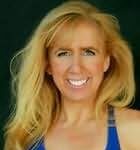 By Kelly Gallucci @ bookish.com
By Kelly Gallucci @ bookish.com
Everyone loves a good prank this time of year, though perhaps none more than Anna Banks. In her upcoming novelJoyride, Banks leaves behind mermaid mythology and instead dives into a contemporary town where a pair of pranksters spend their midnights blowing off steam. Here, Banks teams up with four other authors to share the books, characters, and even authors who have pranked them good.

Tom Sawyer
Pranksters tend to get a bad rap: that they’re morally deficient just because they enjoy harassing/surprising/scaring unsuspecting victims. Incorrect, haters, incorrect. Even pranksters hold to a certain moral integrity. For instance, they usually won’t target old people, and if they do, the prank is mild and generally safe; perhaps the application of a false skid mark, to give an example.
My favorite literary prankster with high moral standards is Tom Sawyer. He pranked, but when it came down to the heart of a serious matter—the whole incident with Injun Joe—he came through wearing his moral britches, not a skid mark in sight. Sawyer taught kids that all-important balance between harmless pranking and committing felonies. My hero. —Anna Banks, author of Joyride
Robert “Tricky Vic” Miller
In general I don’t like pranks—not in real life and not even in fiction. They make me too nervous. (This is the same reason why I am a terrible guest at surprise parties. Everyone else jumps out to shout “SURPRISE!” and I’m still hiding under the table.) But I’m totally into this brand-new picture book biography about a world-class prankster: Tricky Vic: The Impossibly True Story of the Man Who Sold the Eiffel Tower byGreg Pizzoli.
Tricky Vic tells the story of a con artist who scammed his way all around Europe, across the Atlantic Ocean, and throughout the United States. This really happened. Vic sold strangers a machine that he claimed produced hundred dollar bills (here’s what it actually produced: nothing), he convinced people to pay him money for the Eiffel Tower (somehow, this worked), and he even tricked Al Capone! I would not want to play any of these pranks, or have any of them played on me, because I am a big fat fraidy-cat. But it makes for a fascinating story. —Leila Sales, author of This Song Will Save Your Life

Frankie Landau-Banks
My favorite prank comes from a recent read, The Disreputable History of Frankie Landau-Banks by E. Lockhart, whose brilliant We Were Liars I loved. “A criminal mastermind,” Frankie is intelligent and shrewd with a killer sense of humor (my Achilles heel in books). She conducts the ultimate prank by assuming the identity of “Alpha,” a male student and leader of the boarding school’s secret society, and manipulating others into carrying out a series of elaborate schemes. Upon discovery, she challenges notions of how males and females are perceived with the pointed: “Why is it psychotic if I did it, and brilliant if Alpha did it?” She’s not only one of my favorite pranksters but one of my favorite characters in literature. —Lori Goldstein, author of Becoming Jinn

Eloise
My favorite prankster from literature is dear, wee Eloise, who lives at the Plaza. (Ooooh, I just love the Plaza, don’t you?) Though Eloise has quite a few prankish moments throughout the book, it’s the last page of the book, where she plans to pour a pitcher of water down the mail chute that is the most delightful to me.
I grew up in an apartment on West 90th street in Manhattan and we had a mail chute right next to the elevator. As a child I loved to slip a letter in and listen to the bright pinging sound it made as it bumped its way down the shaft. A pitcher of water?! I never dreamed of such a wonderful prank. But that is what literature is for—to inspire us! —Emmy Laybourne, author of Monument 14 and Sweet

Beatrice Sparks
This is not a prank from a book. The prank is the book: Go Ask Alice by Anonymous. And I totally fell for it. I’ll never forget reading Go Ask Alice back in junior high. Other kids learned about drugs at parties and in friends’ basements. A bookish, nerdy girl, I learned about them by reading this “diary”—full of what seemed to me, at the time, to be realistic, terrifying experiences suffered by a teen drug addict. She goes to a party and someone spikes her drink with LSD! She steals sleeping pills from her innocent grandparents! She runs away to California and does heroin!
Years later as a college student, I found a copy of this 1971 publication and reread it. The once frightening entries now seemed laughable. Not only are the voice, vocabulary, and register of the book clearly an adult’s, are we honestly to believe the drug-addled diarist kept detailed, grammatically-correct entries while shooting smack and living on the streets? And what teen girl writes in her diary about bringing a gelatin salad to a Christmas party? What teen girl brings a gelatin salad anywhere? So I decided to do some research. (What can I say? I was still a bookish nerd.)
Turns out Go Ask Alice was actually written by youth counselor and therapist Beatrice Sparks who went on to write several other “diaries” about teens who got pregnant, got HIV, and got involved in worshipping Satan. (Seriously.) While Go Ask Alice may have been responsible for scaring the living daylights out of millions of impressionable teenagers, including yours truly, there was no Anonymous. Just a grown-up who apparently had a thing for gelatin salads. —Jennifer Mathieu, author ofThe Truth About Alice and Devoted
REPRINTED WITH PERMISSION FROM BOOKISH.COM







